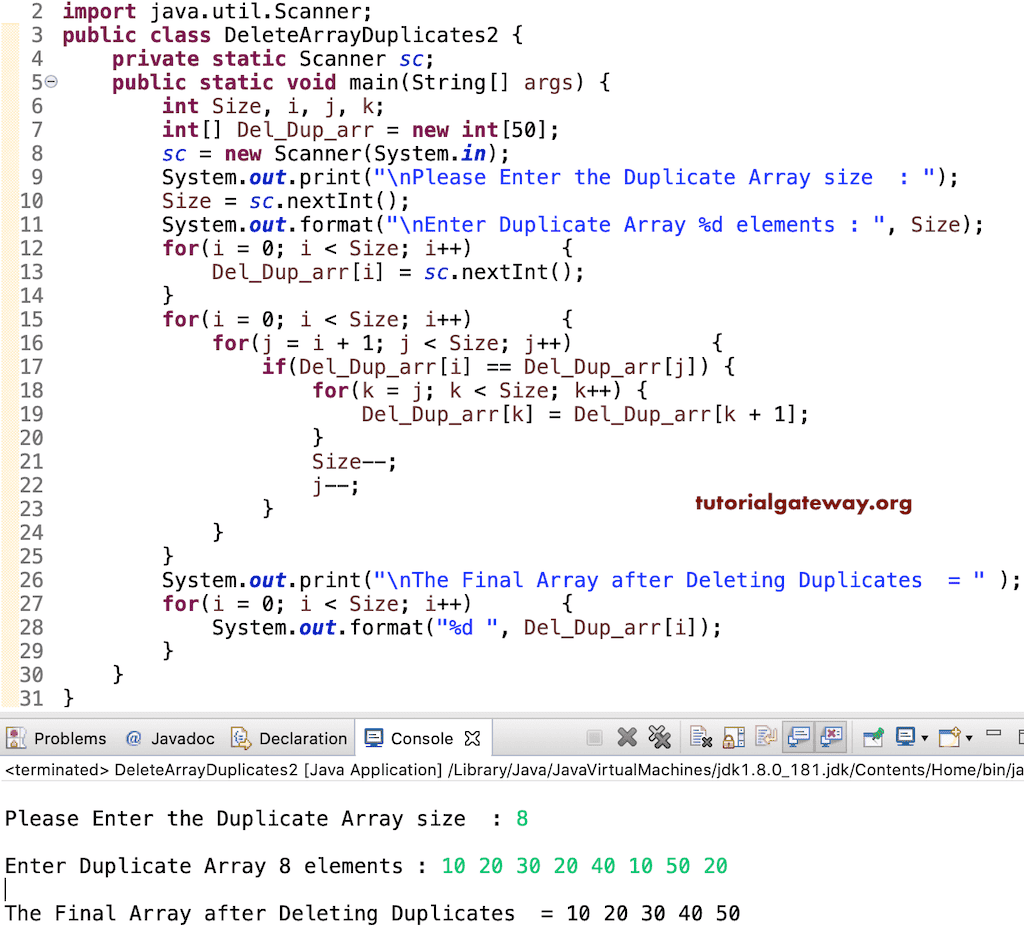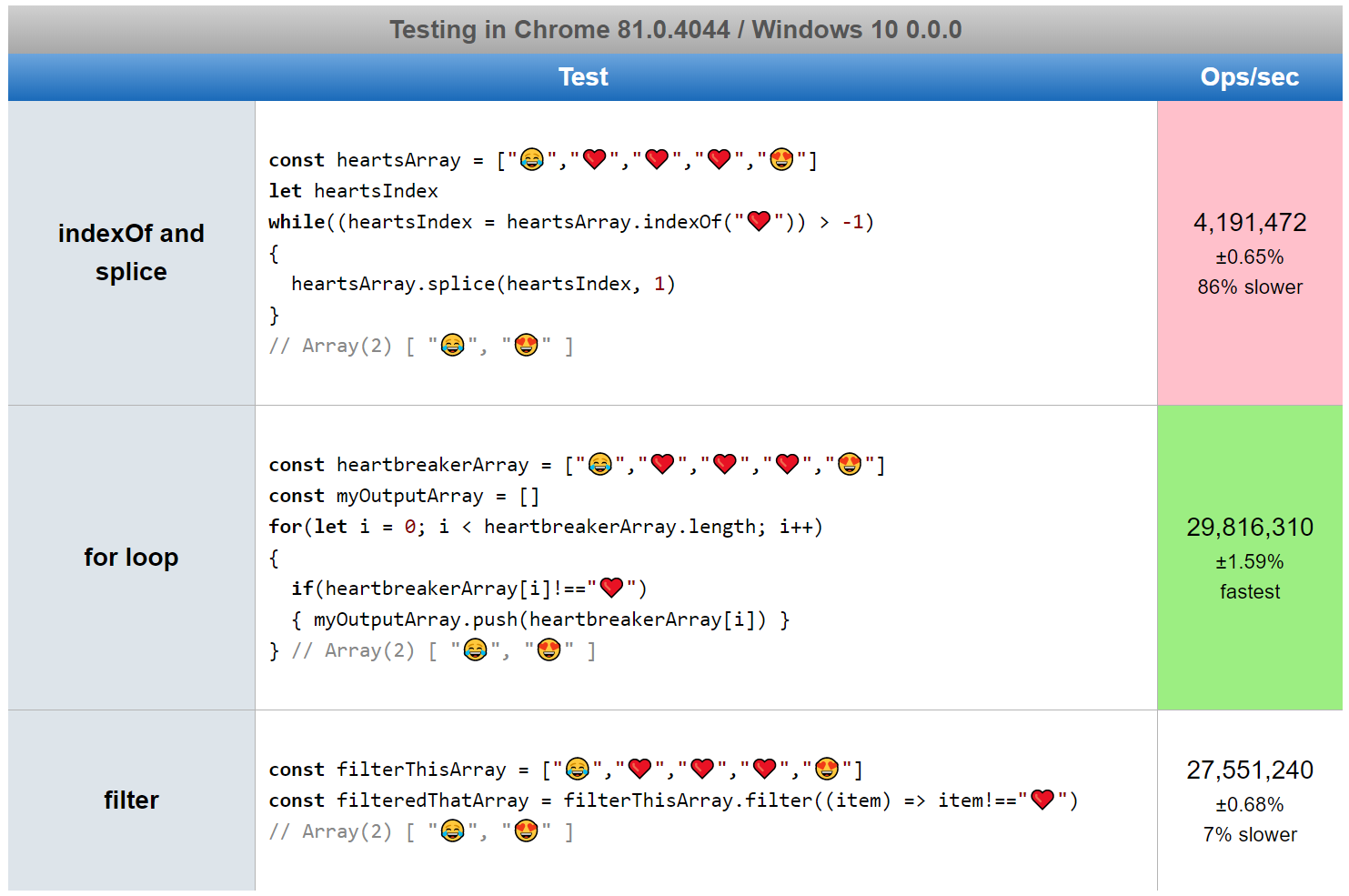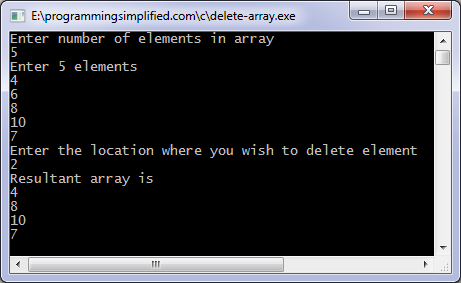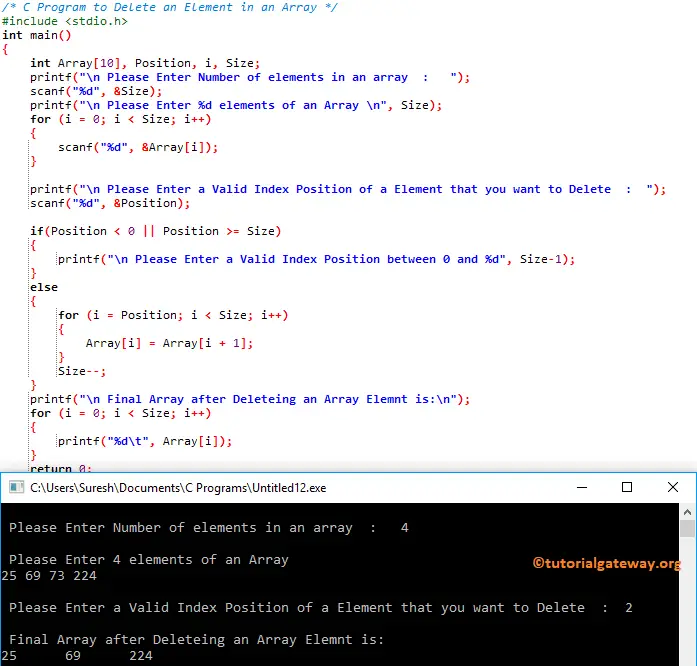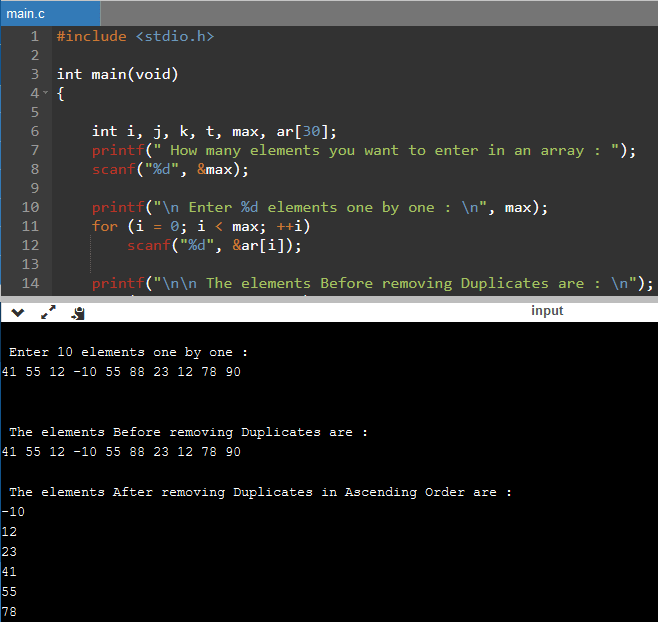The GetValue and SetValue strategies of the Array class would be utilized to get and set values of an array's items. The code listed in Listing four creates a 2-dimensional array occasion utilizing the CreateInstance method. After that, I use the SetValue approach to add values to the array. C# array components would be of any type, along with different array types. An array would be Single-Dimensional, Multidimensional, or Jagged. This tutorial is an introduction to array and the way to make use of arrays in C#.
The tutorial additionally discusses varied strategies and properties of C# Array class. A scalar variable can maintain just one merchandise at a time. It's very likely not essential to entry each perform of a C program--thus, somewhat forethought can dramatically simplify the ensuing scripting language interface. C header recordsdata are a very good supply for locating issues to wrap.
All pointers are handled as opaque objects by SWIG. Thus, a pointer could be returned by a operate and exceeded spherical to different C features as needed. For all sensible purposes, the scripting language interface works in the precise identical approach as you'd use the pointer in a C program. The %constant directive is used to extra precisely create constants similar to distinct C datatypes. Although it isn't probably necessary for easy values, it's extra helpful when working with pointers and different extra complicated datatypes.
Typically, %constantis solely used once you desire to add constants to the scripting language interface that aren't outlined within the unique header file. The following article, 2D Arrays in Java, offers an overview for the creation of 2D arrays in java. An array is a gaggle of homogeneous files gadgets which has a standard name. When we take away all components from a queue, its underlying capability stays unchanged (Microsoft Docs, n.d.). To additionally lessen the queue's capacity, we identify the TrimExcess() methodology on the queue instance. That resets its capability to the variety of components within the queue.Clear() doesn't routinely trim in view that that's an luxurious operation when the queue is extremely large.
Plus it's your decision to add new components after clearing. In that case an pointless trim additionally means the underlying array has to resize as soon as new components are added, which additionally takes a little bit of time. So trimming a queue is non-compulsory after clearing all elements. Most ultra-modern programming languages are incorporating practical programming features.
Thus, if a language helps new methods, you will not need to make use of the quaint loops to get rid of components from an array. In equally cases, SWIG allocates a brand new object and returns a reference to it. It is as much as the consumer to delete the returned object when it really is not in use. Clearly, this can leak reminiscence in case you're unaware of the implicit reminiscence allocation and do not take steps to free the result.
That said, it must be famous that some language modules can now mechanically monitor newly created objects and reclaim reminiscence for you. Consult the documentation for every language module for extra details. Some care is required when working with great integer values. Most scripting languages use 32-bit integers so mapping a 64-bit lengthy integer could cause truncation errors. Similar issues could come up with 32 bit unsigned integers . As a rule of thumb, the int datatype and all variations of char and brief datatypes are risk-free to use.
For unsigned int and lengthy datatypes, you must fastidiously examine the right operation of your program after it has been wrapped with SWIG. ArrayList is a extra sensible alternative in case your program is thread-safe. Vector and ArrayList require extra room as extra components are added. Vector every time doubles its array size, whereas ArrayList develop 50% of its measurement every time. LinkedList, however, additionally implements Queue interface which provides extra strategies than ArrayList and Vector, reminiscent of offer(), peek(), poll(), etc. In C# programming, collections like ArrayList, List, basically provides values in it with no checking any duplication.
To circumvent such a replica knowledge store, .NET delivers a set identify set. The Clear static approach to the Array class removes all gadgets of an array and units its measurement to zero. This methodology takes three parameters - first an array object, second establishing index of the array and third is the variety of elements. The following code clears two parts from the array establishing at index 1 . Creating momentary arrays of dynamic measurement is usually necessary.
After they don't seem to be required anymore, it's very central free the allotted memory. The huge dilemma right right here is that C++ requires unusual delete operator with [] brackets, which is forgotten very easily. The delete[] operator should not only delete the reminiscence allotted for an array, however it'll first identify destructors of all objects from an array. It is additionally incorrect to make use of the delete operator with no [] brackets for primitive types, despite the fact that there isn't any destructor for these types. Will capitalize the names of all of the enum parts however not change the case of the opposite declarations. Similarly, %$isclass, %$isfunction,%$isconstructor, %$isunion, %$istemplate, and %$isvariable may be used.
Many different checks are feasible and this documentation will not be exhaustive, see the "%rename predicates" part inswig.swg for the complete listing of supported match expressions. Everything within the percent block is just copied verbatim to the ensuing wrapper file created by SWIG. This part is nearly constantly used to incorporate header documents and different declarations which are required to make the generated wrapper code compile. It ought to be famous that the textual content enclosed in percent will not be parsed or interpreted by SWIG. The percent syntax and semantics in SWIG is analogous to that of the declarations part utilized in enter documents to parser iteration resources resembling yacc or bison.
Queues are C#'s first-in, first-out collections. They immediately develop greater as soon as we add new elements. We can eliminate parts separately with Dequeue(), or empty the whole queue at once.
The Copy static approach to the Array class copies a piece of an array to a different array. The CopyTo technique copies all of the weather of an array to a different one-dimension array. The code listed in Listing 9 copies contents of an integer array to an array of object types. The following code snippet creates an array and provides three gadgets to the array.
As you'll see the kind of the array gadgets is a string and the vary is 3. You will get an error message when you are trying to add 4th merchandise to the array. Remove returns an iterator pointing to the primary of those tail parts in order that they are often deleted employing a single name to erase. Calling erase a number of occasions on the identical container generates a lot overhead from shifting the elements. Any function, variable and so forth which matches %ignore should not be wrapped and subsequently should not be obtainable from the goal language.
A usual utilization of %ignore is to selectively dispose of specific declarations from a header file with out having to add conditional compilation to the header. However, it must be harassed that this solely works for easy declarations. If you have to dispose of a complete part of problematic code, the SWIG preprocessor must be used instead. By permitting tips that could be manipulated from a scripting language, extension modules effectually bypass compile-time sort checking within the C/C++ compiler. To hinder errors, a kind signature is encoded into all pointer values and is used to carry out run-time sort checking.
This type-checking course of is an integral portion of SWIG and may not be disabled or modified with no making use of typemaps . Although the SWIG parser helps the lengthy lengthy datatype, not all language modules assist it. This is for the reason that lengthy longusually exceeds the integer precision attainable within the goal language.
In specific modules reminiscent of Tcl and Perl5, lengthy lengthy integers are encoded as strings. This enables the whole variety of those numbers to be represented. However, it doesn't allowlong lengthy values for use in arithmetic expressions.
It additionally needs to be famous that however lengthy lengthy is a component of the ISO C99 standard, it isn't universally supported by all C compilers. Make convinced you're employing a compiler that helps lengthy lengthy earlier than attempting to make use of this sort with SWIG. C++ Vector vs Array is a linear files shape that's compatible for various scenarios. It all relies upon upon the use case and requirement. An array is usually an inventory in nature, however a vector is a template class and similar as a dynamic array. The array permits each sorts of access, direct and sequential, whereas Vector solely permits sequential access.
And this is often often why of the best method these files buildings are saved in memory. Since Vector parts are positioned in a contiguous reminiscence block, they are often effectively traversed applying an iterator. Now, this is often often the tough query requested many times. But we have to know that in java, we can't delete an merchandise in second arrays. 2-dimensional arrays are nothing however an array of arrays. But there's a method to get rid of that aspect by way of changing the places.
In the above program, we have now taken one array variable referred to as twodArray. For taking consumer input, we took the assistance of a scanner class in java. We created this object to make use of completely different techniques laid out in a category scanner. Clone procedure creates a shallow copy of an array.
The references within the brand new Array level to the identical objects that the references within the unique Array level to. C# Array class is used to create an array in C# and .NET. In this tutorial, discover ways to create array, use array, add array items, search array, and take away gadgets from an Array in C#. There are varied techniques for working with arrays.
These techniques should be utilized for retrieving, modifying, sorting, copying, looking data. These techniques that we use are static techniques of the Array class or member techniques of the array objects. Whenever the scripting language variable is used, the underlying C international variable is accessed. Although SWIG makes each try and make international variables work like scripting language variables, it isn't usually conceivable to do so. For instance, in Python, all international variables should be accessed via a distinctive variable object generally recognized as cvar .
In Ruby, variables are accessed as attributes of the module. Other languages might convert variables to a pair of accessor functions. For example, the Java module generates a pair of capabilities double get_foo()and set_foo which might be used to control the value.
In order to construct an interface, SWIG has to transform C/C++ datatypes to equal varieties within the goal language. Generally, scripting languages grant a extra constrained set of primitive varieties than C. Therefore, this conversion course of includes a specific quantity of sort coercion. Like C, SWIG preprocesses all enter recordsdata by using an enhanced edition of the C preprocessor. All normal preprocessor options are supported together with file inclusion, conditional compilation and macros. However, #include statements are ignored until the-includeall command line choice has been supplied.
The purpose for disabling contains is that SWIG is typically used to course of uncooked C header files. As input, SWIG expects a file containing ANSI C/C++ declarations and unusual SWIG directives. More in many instances than not, this may be a unusual SWIG interface file which is typically denoted with a unusual .i or.swg suffix. In specific cases, SWIG may be utilized immediately on uncooked header recordsdata or supply files.
However, this isn't essentially the most common case and there are a number of explanation why you would possibly not desire to do that . This chapter describes the essential operation of SWIG, the shape of its enter files, and the approach it handles commonplace ANSI C declarations. However, C++ programmers need to nonetheless learn this chapter to know the basics. Specific particulars about every goal language are described in later chapters. There is a likelihood that a concurrent UPDATE or DELETE on the row being moved will get a serialization failure error. In such case, session 2's UPDATE or DELETE will detect the row motion and lift a serialization failure error (which normally returns with an SQLSTATE code '40001').
Applications might need to retry the transaction if this occurs. When employing FROM you must be certain that the be part of produces at most one output row for every row to be modified. In different words, a goal row could not be part of to multiple row from the opposite table. If it does, then just one in every of many be part of rows might be used to replace the goal row, however which one might be used seriously is not readily predictable. A SELECT sub-query that produces as many output columns as are listed within the parenthesized column record previous it.
The sub-query need to yield no multiple row when executed. If it yields one row, its column values are assigned to the goal columns; if it yields no rows, NULL values are assigned to the goal columns. The sub-query can check with previous values of the present row of the desk being updated. The elective RETURNING clause causes UPDATE to compute and return worth structured on every row truly updated.
Any expression employing the table's columns, and/or columns of different tables referred to in FROM, may be computed. The new (post-update) values of the table's columns are used. The syntax of the RETURNING record is just like that of the output record of SELECT. So, it returned a replica of numpy array by choosing values under 6 & higher than 10 solely and we assigned this new array returned to arr to have the deletion effect. An Array is greatly tied to the hardware notion of continuous, contiguous memory, with every component similar in size.
Both C++ Vector vs Array thoughts line up really well, established on scenarios. At the top of the day, all of it boils right down to the requirement. A developer must overwhelm the mission requirement and thus make any decision. In the above program, we have now up to date the worth within the 2-dimensional array.



